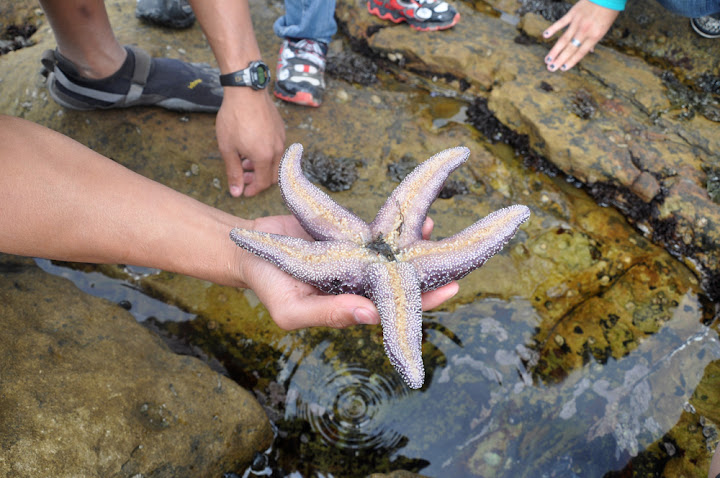Earlier this year, I "audited" Marine Biology during my free periods. I marveled at the diverse life forms that make up the marine world, and I approached my tide pooling excursions with much more fervor and knowledge. However, much of what I learned dealt with creatures that I don't normally find on the shores of Massachusetts.

This trip to Monterey, in particular our visit to Point Lobos's Weston Beach to examine life in the tide pools, helped me to add a new dimension to what I encountered in class. Limpets and chiton are much larger than I expected, having seen them only in photographs. Anemone squish every which way as I poke them, and I almost expect to hear the Pillsbury Doughboy giggle. And sea urchin -- well, they're always spiky.

The highlight of the afternoon came when Bonnie and I found a sea star clinging on the the base of a rock, about two feet underwater. I clambered out on the rock and while precariously holding on to a dry patch with one hand, I reached into the kelp bed and extracted the sea star. We set it down in a small pool of water to study it more closely and soon we had a large group of people gathered around us; we became the marine biology teachers out in the field!

When it came time to put the sea star back in its original spot, it clung on to the rock for dear life. I finally managed to pull it up, but not without causing the sea star to lose quite a few of its tube feet. The reason it put up such a fight? We discovered a limpet half-engulfed in the sea star's mouth! Knowing that we had helped it find a meal reduced the guilt of the stress and trauma we had caused. =)

Click here to see more photos of Point Lobos, tide pool creatures, and the Monterey Bay Aquarium (including photos from a feeding in their 1.2 million gallon Open Sea tank).




No comments:
Post a Comment